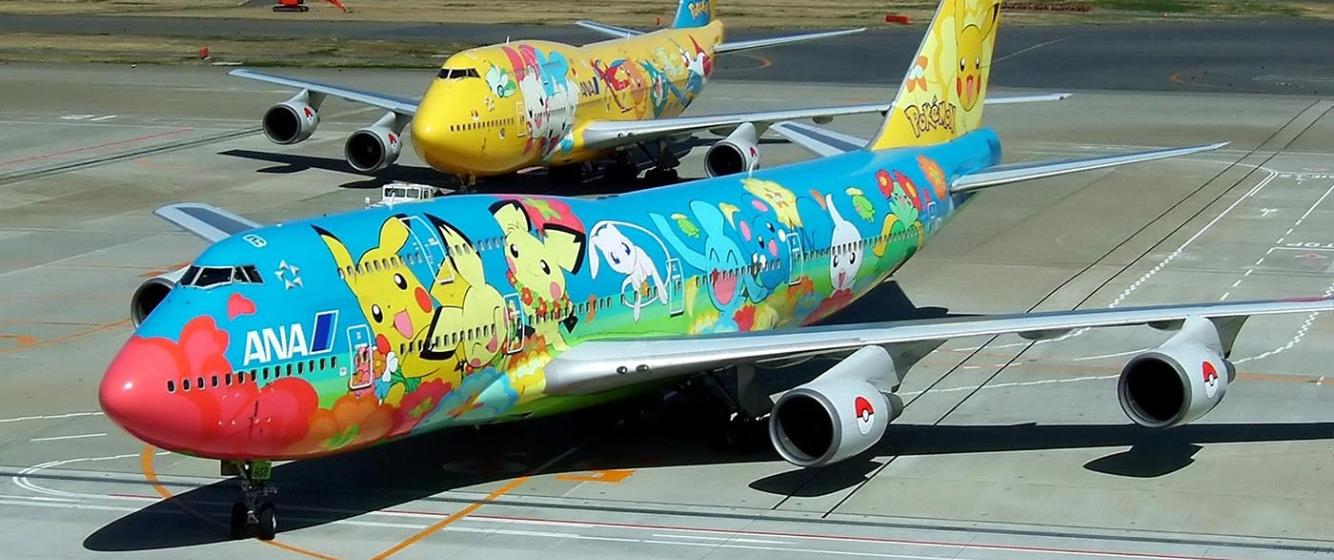
Generation Z is Japanese
Anyone under 30 in this world grew up with a Japanese childhood.
In the United States, Generation Z is defined as the generation born in the late 1990s or the early 21st century, that grew up with digital technology, the internet, and social media from a very young age.
And they grew up with Japanese anime.
Pokémon, one of the first anime series on television to reach mainstream success worldwide debuted in Japan in 1997 and North America in 1998. The anime, based on the popular video game, later debuted in Korea in 1999 after the Korean government relaxed the ban on the broadcasting of Japanese cultural imports and also in China that same year. Pokemon also debuted in the UK and in Latin America in 1999. By 2000, the Pokémon anime had debuted in 51 countries.
A child who was six years old at the global debut of the show in 2000 would be thirty in 2024. Worldwide, Generation Z is one that grew up with Japanese animation. Look at the different languages of the Pokémon opening song (which was based on the North American version of the song) English, German, Castilian, Italian, French, Latin American Spanish, Finnish, Brazilian Portuguese, Danish, Norwegian, and Italian:
But then, this is quite different from the original Japanese version of the Pokemon opening. In fact one could say that the North American version has become the unofficial worldwide standard.
The Korean version hums along in a cheerful and energetic Korean trot music style that parents and grandparents could sing along with their children.
In China, the Mandarin dub subtitles the original Japanese opening and ending themes.
All these localized versions show that anime has become so ubiquitous that its popularity worldwide no longer attracts much attention. It is just taken for granted that young kids will watch Pokémon, or play Japan-designed video games like the Super Mario franchise. Anime and Japanese popular culture is no longer the subject of much discussion in academia or the media, as it has become normalized, especially for Generation Z which sees Pikachu as a part of their childhood.
The anime machine
Although dubbed for younger audiences, older teens and adults can easily access undubbed anime via streaming services and television. How big is anime? In 2022, according to the Association of Japanese Animations report, anime alone made $20.57 billion dollars, with half of sales outside of Japan. which is on par with the $12.45 billion dollars of ALL Korean cultural exports in 2022 including K-pop songs, movies, video games, and television shows. If we add in Japanese video games, movies, and songs, then the number will be much larger.
Look at this list of the top 25 highest grossing franchises of all time. The Pokémon franchise, which includes Pokémon video games and merchandise, has made $92.121 billion overall as the highest grossing franchise of all time. Sanrio’s Hello Kitty franchise, by the way, is in second place with $80 billion in total revenues. Both outpace Mickey Mouse, which has earned $70.587 billion in revenues.
In fact, 11 of the top 25 franchises are of Japanese origin (Pokémon, Hello Kitty, Anpanman, Mario, Shonen Jump, Gundam, Dragon Ball, Fist of the North Star, One Piece, Yu-Gi-Oh!, Transformers)
Japanese anime first became popular worldwide in the sixties, starting with Tetsuwan Atomu (1963) which was dubbed into English and retitled as Astro Boy (1963) for American consumption. Many dubbed Japanese animation followed. Almost all had what Koji Iwabuchi would call their “cultural odor” erased, in other words, having all traces of Japanese culture erased. Thus, few children realized they were watching dubbed Japanese animation.
In Korea, where Japanese language broadcasts are still banned on Korean primary airwaves due to bitter memories of Japanese colonial rule, dubbed Japanese anime was popular among young children. Given the cultural similarities between the two countries, it was easy to give the characters Korean names, and dub their voices into Korean. Take the racing anime Mach Gogogo (1967) which was broadcast in the US as Speed Racer (1967) and in Korea as Dallyeola beongaeho (Run, Lightning,달려라 번개호, 1975).
Thus, even in Korea, where Japanese popular culture broadcasts was prohibited by law, Koreans had a Japanese-influenced childhood by watching dubbed Japanese anime.
By the 1990s, Japanese animation had become popular outside of East Asia, and people knew of the Japanese origins of movies like My Neighbor Totoro (1988), Akira (1988) or Ghost in the Shell (1990). The popularity of anime spawned academic and media articles explaining the rise of Japanese popular culture outside of Japan. For example, in the year 2000, Douglas McCray coined the term “Gross National Cool” to explain the rise of Japan as a cultural powerhouse rivaling that of the United States. He said that Japanese culture was plastic enough to take in universal influences and yet indigenous enough to impart its own flavor to it, thus making a crowd-pleasing culture that could be universally understood, and yet different enough from American influenced culture.
When you think of it, people keep forgetting that Pikachu has no nationality, or that Kitty from Hello Kitty is officially a British citizen, and that Mario, from Super Mario franchise, is officially from New York. We know these products are Japanese, and identify them as Japanese, but don’t think of them as Japanese.

From Crunchyroll Store (store.crunchyroll.com)
The site above for the NBA and My Hero Academia collaboration shows the power of animation in reaching to Generation Z.
The rise of video streaming platforms has contributed to the worldwide rise of anime. Advertising agency Dentsu points out that “It is no exaggeration to say that especially for Gen Z digital natives, anime is now part of the mainstream culture, rather than a niche hobby only known to a few dedicated enthusiasts.” And while in the past anime titles were first broadcast in Japanese and then a few popular titles were later translated to other languages, these days, as soon as a popular anime title is produced in Japan, it is broadcast globally at nearly the same time. Streaming services have given youth and young adults worldwide a way to access anime simultaneously.
Effects of the anime boom: spread of Japanese culture and language
By the 2000s, Japanese animation had become mainstream even on television. For example, in the Us, cable station Cartoon Network’s Toonami broadcast dubbed Japanese animations, but the opening and ending theme songs were still broadcast in their original Japanese, such as Do As Infinity’s “Fukai Mori,” which was the ending theme song for Inuyashsa (2002 in the U.S).
As fans grew older, they knew they were watching shows or playing video games from Japan, and thus Japan became internalized in their minds as a place of cool. No wonder Japanese language enrollments have grown worldwide, despite the difficulty in learning the language for those used to European languages.
And now, with video streaming services, fans worldwide can listen to the anime in Japanese. Although children grow up with dubbed and localized versions of Japanese anime or video games, streaming has led to Japanese becoming one of the official languages of the Pop Pacific. Japanese is quite popular among students overseas who choose to learn a language. According to language app Duolingo, Japanese is the most popular Asian language being studied worldwide, outpacing Korean and Chinese. In the United States, Japanese is the fourth most studied language at colleges in 2021, trailing only Spanish, French, and American Sign Language.
With so many fans, there is a demand for authenticity, and many want to hear Japanese versions of the anime. A 2023 survey of American animation fans shows that Gen Z has the highest percentage of anime fans, with over 69% stating that they watch it, compared to just 23% of Baby boomers. And these fans prefer subtitles for many series, subbed anime are preferred because words and phrases get lost in translation. Anime fans can claim to be “authentic” fans by knowing Japanese and being able to understand Japanese language anime.
Anime has staying power in the Pop Pacific for another reason. While K-pop is popular, it must still largely identified with teenagers, and especially young girls. I am cautious in telling other academics that I am a K-pop fan, and it would be strange for me to publicly talk of how I like to listen to teen-oriented K-pop hits like those from the Korean-Australian idol group Stray Kids.
But all people under the age of 30 and many in their forties and fifties grew up with anime, and it is socially more acceptable to like anime as an adult. That is why at anime goods stores throughout Japan, one can find older international tourists eagerly purchasing anime t-shirts and figurines, and souvenirs for themselves and of course, for their kids.
As the animation generation grows up, expect to see more non-Japanese people learning Japanese. And they will regard Japanese culture as a normal part of their childhoods. And they will continue to flock to anime merchandise stores.
Discussion Questions
- Which anime show did many Gen Z kids grow up watching?
- How much money did anime make in 2022, and how much came from outside Japan?
- Why does the author say Gen Z all over the world “grew up with a Japanese childhood”?
- Did any Japanese show or game influence you when you were young? How did it affect you?
- Why might watching anime in Japanese feel more “real” or meaningful for fans?
- What does it mean for a generation to be shaped by media from another country? How could that change what we think of as “local” or “global” culture?
- Do you see anime's influence where you live—in language, art, or technology? Can you give an example?


Add new comment